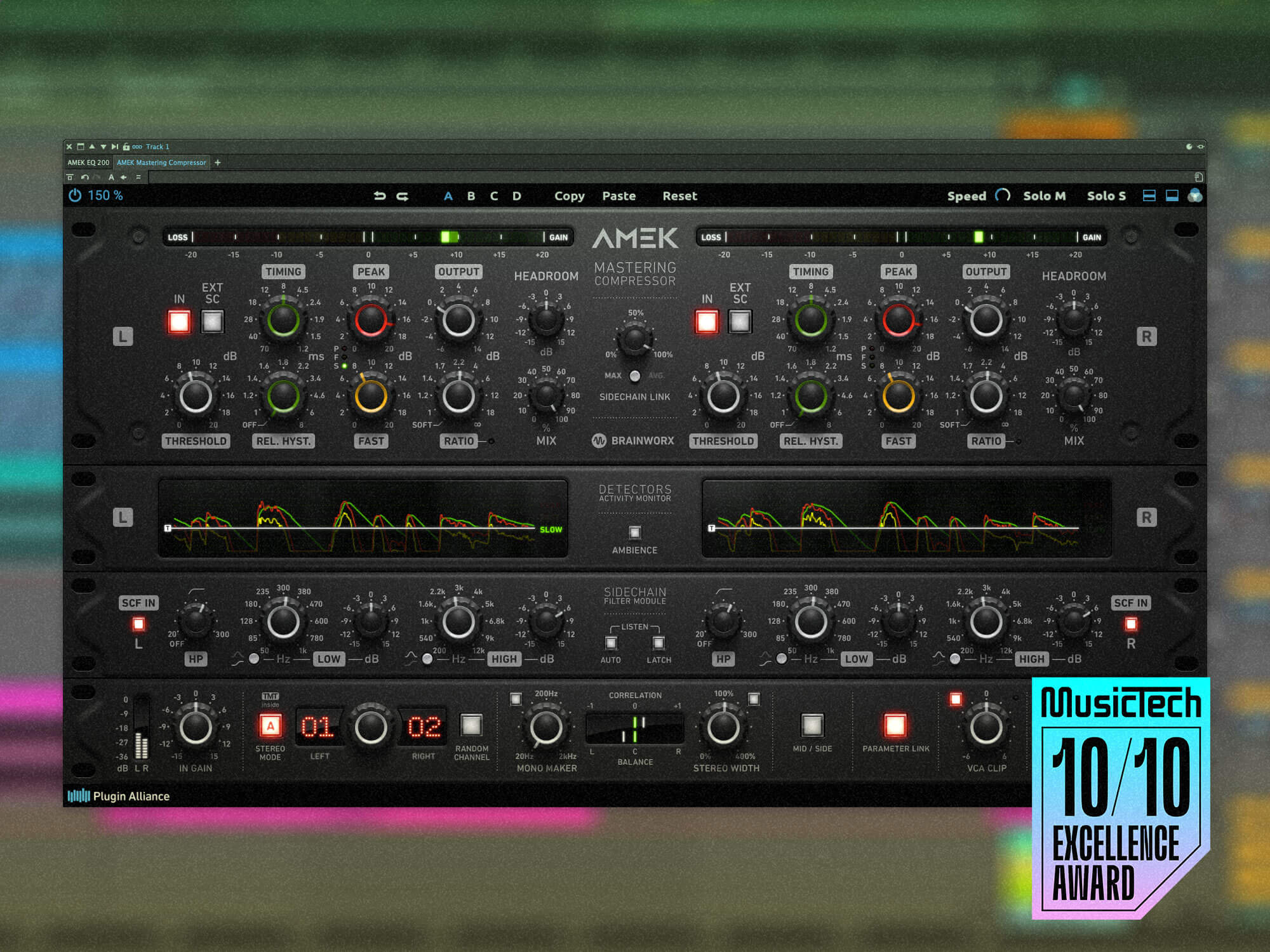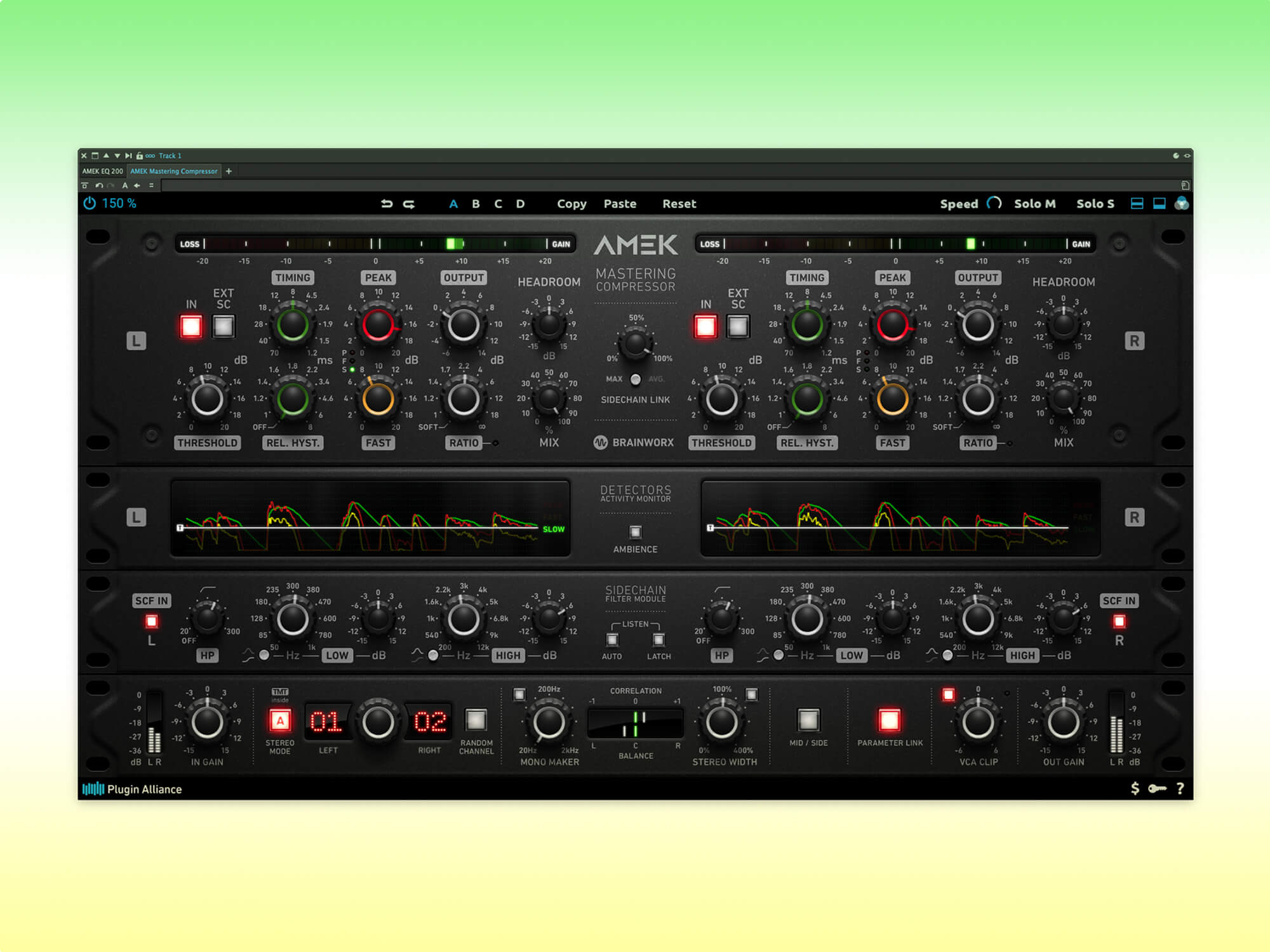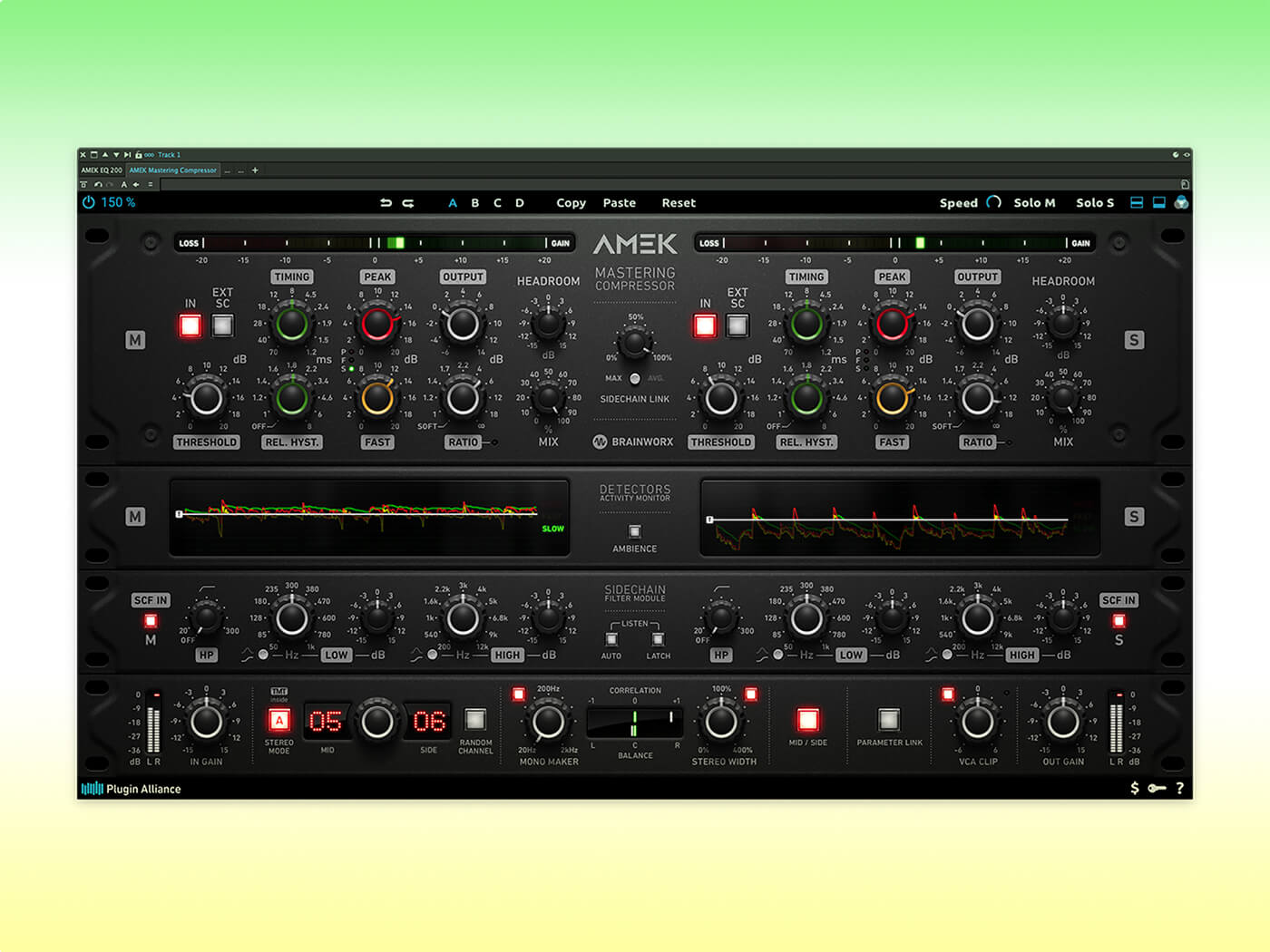Has Brainworx created the perfect compressor with the AMEK Mastering Compressor plugin?
Pundits are hailing it as the greatest mastering compressor ever created, but surely such claims are overstated? We had to find out for ourselves…

Review Overview
Our rating
10
Our verdict
⊕ Multiple detectors allow plugin to ‘hear’ like the human ear
⊕ Peerless results, with astonishing transparency
⊕ Can be switched to mid/side mode
⊕ Detector activity readout is detailed and easy to read
⊕ Detailed sidechain EQ for sculpting tonal response
⊖ Expensive… but worth it!
Mastering compressors have a difficult task to perform. They have to catch and control the dynamics of complex, full-spectrum mixes, they are expected to add solidity, space and coherence to a mix, and they need to pull these tricks off transparently, making no changes to the fundamental tone or balance of the source material. It’s a big ask and one that very few processors – hardware or software – can achieve consistently in every scenario.
READ MORE: How to monitor accurately in a bedroom studio
However, Brainworx’s latest AMEK plugin has set off something of a storm in mastering-focused corners of the internet, with the general consensus citing this as the very best mastering compressor ever created. That’s quite a bold claim given the quality of the competition – Shadow Hills Class A and SPL Iron to name just two. How does it stand up to scrutiny?
Psychoacoustic compression
Brainworx is being covert about AMEK Mastering Compressor’s origins, saying only that the plugin is modelled on a vintage processor that’s owned by, and a particular favourite of, company founder Dirk Ulrich. As it turns out, that hardware is not some well-worn Urei, DBX or Neve classic for which dozens of models already exist, but is in fact the rarely-seen, almost mythical 8900 compressor from George Massenburg Labs.
What’s special about the GML 8900 (and by extension, the AMEK plugin) is that its detectors are designed to operate on psychoacoustic principles – in other words, it ‘hears’ in the same way as we humans do – responding to perceived loudness rather than the raw signal level. This is achieved by employing three independent detectors per channel.
The first two are true RMS detectors, sensitive to dynamic changes over long and short periods respectively, and the third is a fast peak detector sensitive to sudden loud transients and signal spikes. The relative sensitivity of each can be modified, with the detector that senses the strongest signal level at any time being the one that controls the gain reduction circuitry at that time.

The overall amount of gain reduction that will be applied is under the control of a good ol’ ratio knob, but this also works differently to conventional compressors. When set to its minimum position, the compressor operates in a soft knee mode. This creates a progressive increase in compression ratio in response to an increasing signal level, very much like the response of an optical compressor.
With the ratio control at any other position, the compressor operates in hard knee mode. As well as giving a fixed compression ratio, hard knee mode also changes the way the threshold control operates, making it act as a gain control driving the input signal into a static threshold level, much like a classic 1176 compressor. The available fixed ratios run the full gamut from 1:1 to a hard-limiting infinity:1.
Hyster-what-now?
AMEK’s compression timing differs from what is typically found on compressors. A single Timing control sets the attack and release times for both the slow and fast detectors (the peak detector always uses very fast attack and release), but the release phase of the two can also be interlinked with the Release Hysteresis dial. Despite its startling name, this control essentially sets a threshold that determines whether the fast or slow detector’s release timing will be used.
The compressor’s behaviour can be further shaped using the Sidechain Filter module, presented as a sub rack to the plugin’s main rack unit. The module packs a high-pass filter, plus low and high parametric bands that can switch between shelving and peak operating modes, giving an impressive degree of frequency control over the processor’s response.
The practical upshot of these multi-detectors, variable timings, knee modes and all the rest of it is that they allow you to precisely tune the response of the compressor to match the characteristics of the material you are processing. When you get things dialled in just right, the results can be breathtaking, adding solidity, clarity and cohesion without any apparent pumping or other undesirable sonic artefacts.
Modern modules
For all of its desirable sonic qualities, the original GML 8900’s metering is a little basic. Each detector has a corresponding LED that lights up when that particular detector has taken control, and the upper area of the panel is dominated by a pair of horizontal meters to help visualise the current gain change.
Brainworx has carried both of these visualisations across to AMEK Mastering Compressor (they’re just about the only visual elements that have been retained), but have also added a much more detailed visualisation in the form of the Detectors Activity Monitor. This module shows a rolling history graph of each detector’s activity, drawn as colour-coded traces, with a marker overlaid to represent the compressor’s threshold. This readout makes it so easy to understand how each detector is responding and, more to the point, which one is active at different points in the music.
For extra assistance, you can ‘solo’ the compression – so-called delta monitoring – to hear only those portions of the signal that are being processed. Hawk-eyed producers recognise this as an original AMEK feature named ‘Ambience’, as found on the 9098i console, recreated much later in Brainworx’s bx_console AMEK 9099 channel strip plugin – and it’s very useful.

The final flourish is a module containing tools seen across a lot of Brainworx plugins. Here, among other things, you can adjust input and output gain, dial in a low-frequency mono-maker and manipulate the overall stereo width. You can also switch the plugin into mid/side processing mode which, coupled with the plugin’s exquisite dynamics processing, allows for some truly jaw-dropping results.
All-in-all, then, we have to concur with the general consensus, because AMEK Mastering Compressor really is worthy of all the accolades and praise it has been receiving. There’s always a fly in the ointment of course, which here takes the form of a hefty price tag of $399 – there is a rent-to-own option, too. But you might want to take that pain because, once you’re over it, you can relax in the knowledge that your effects rack is graced with one of the best mastering compressor plugins ever created.
Download Brainworx AMEK Mastering Compressor at plugin-alliance.com
Key features
Plugin with AAX, AU and VST formats
Mastering-grade dynamics processing
Stereo, dual mono or mid/side operation
Incorporates Brainworx Tolerance Modelling Technology
Supports external sidechain input
Includes accessible colour scheme